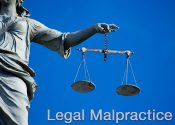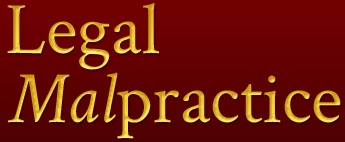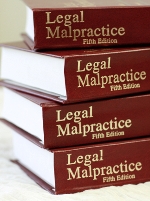 Editor’s note: this post was originally published on 10/24/2016. It has been updated to reflect further developments.
Editor’s note: this post was originally published on 10/24/2016. It has been updated to reflect further developments.
Law360 reported that the Texas Supreme Court affirmed an appeals court’s dismissal of a legal malpractice claim against Am Law 200 member Andrews Kurth Kenyon LLP, whose clients incurred a $3 million judgment in a suit filed by the sellers of a home health care agency that they purchased.
Background
According to the appeals court’s decision and a synopsis of the malpractice complaint, entitled Rogers v. Zanetti, James Rogers hired Andrews Kurth attorney Victor Zanetti to represent him in his acquisition of 80% of Accent Home Health from its owners, Daniel and Leslie Alexander.
After the deal concluded, Rogers was added as a signatory to Accent’s bank account, and opened new bank accounts for Accent. Further, his colleague and co-plaintiff, William Burmeisterer, handled Accent’s accounts payable.
A dispute soon arose between Rogers/Burmeister and the Alexanders, who alleged that Rogers had misallocated funds from Accent’s bank account. The Alexanders sued to void the Investment Agreement as unconscionable, unenforceable, illusory and void, and also brought claims for fraud and breach of fiduciary duty.
Rogers/Burmeister asked Attorney Zanetti to refer them to a lawyer to defend them; he recommended his colleague, Charles Perry, of Andrews Kurth, who accepted the case.
The matter was tried in 2004. The jury found that the Rogers/Burmeister defendants had committed fraud and breached their fiduciary duties, and awarded the Alexanders over $3 million in damages. Further, the trial court ruled that the Investment Agreement was void.
The defendants appealed the judgment, and the Dallas 5th Court of Appeals affirmed.
Malpractice Complaint
Texas Lawyer reported that in 2012 – eight years after the trial – the Rogers/Burmeister defendants sued Andrews Kurth, and attorneys Zanetti and Perry for negligence and breach of fiduciary.
Their counsel stated that his clients had paid the Alexanders’ about $100,000 of the judgment, which by then had increased to about $5 million.
The primary allegations against the Andrew Kurth defendants were::
- Zanetti had a fiduciary duty to recommend an outside lawyer, since the contract that he had drafted was at the center of the litigation, but instead recommended a co-worker, whose fiduciary duties were split between his clients and his firm. “This irreconcilable conflict of interest compromised the entire strategy for defending the case…Perry and Andrews Kurth LLP found themselves in the untenable position of choosing between defending the work product of Zanetti that had sparked the litigation and acting as zealous and competent advocates for the plaintiffs, who were the firm’s clients.”
- Perry didn’t hire an expert to counter the Alexanders’ expert’s valuation of their business, and thus failed to rebut their damages claim.
- Perry advised his clients to prepare documents detailing the services that they were providing to Accent, which were to be used in deposition, but he allegedly tried to “hoodwink” the court by pretending the documents were old invoices, rather than having been prepared for litigation purposes. Rogers was forced to pay $25,000 in sanctions when the court discovered the truth. (Following the sanction, Andrews Kurth suggested that their clients find new counsel, which they did.)
- Perry failed to tell his clients that he had received a $450,000 settlement offer from the Alexanders before trial, which “would have released the [Clients] from liability and given them control over Accent.”
Rogers/Burmeister seemed to believe that this was their strongest claim.
According to the Appeals court decision, they elicited deposition testimony from the Alexanders’ attorney (Marketos) that
“he sent a settlement demand to (Rogers/ Burmeister) soon after the (Alexanders)… filed (suit) and got no response. The record contains the settlement offer itself, which was dated August 6, 2003. The Alexanders offered to let Rogers continue using the Accent name and to execute mutual releases of all claims if Rogers paid them $450,000…Marketos said the demand was a “starting point,” but he could not remember how much authority he had to go below $450,000.
Rogers testified by affidavit that the Lawyers did not communicate the settlement offer to him and that he did not learn about it until 2013…
Rogers further said, “Had I known that I could have settled the case with the Alexanders and Pucci and received control of Accent for $450,000, I would have instructed my attorneys to negotiate the best possible resolution and release without incurring the time or expense of litigation.”
He also said that the Alexanders… made settlement demands of over a million dollars after the trial court sanctioned him.”
Law Firm Response
Andrew Kurth filed a motion for summary judgment that argued “(1) no evidence of causation, (2) collateral estoppel, (3) the unlawful-acts doctrine, (4) the statute of limitations, and (5) impermissible fracturing of negligence claims into fiduciary breach claims.”
The trial court granted the motion.
Appeals Court
Plaintiffs appealed, and the Fifth Court of Appeals upheld the lower court’s dismissal in June, 2015.
Regarding the settlement offer, the court ruled:
“…the clients contend that they would have avoided a much larger liability and acquired Accent as well if they had known about the settlement offer. For this to be true, they would have had to both reach a settlement and perform its term…But they adduced not evidence that they could pay the Alexanders $450,000, as the actual settlement offer demanded, or any lesser amount that the Alexanders would have accepted. Without such evidence, there is a fatal gap in the but for cause evidence.”
Supreme Court Appeal
Rogers/Burmeister appealed the dismissal to the Supreme Court, arguing that the lower courts erred by applying the “but for” legal malpractice causation evidence standard to their claims.
That standard requires that plaintiffs prove that they would have prevailed at trial “but for” their attorney’s alleged legal malpractice. Instead, plaintiffs argued that their claims should have been evaluated on the basis of whether the Andrew Kurth defendants’ alleged wrongdoing was a substantial factor in bringing about their complained-of injuries — not the “case within a case” test that asks whether the clients would have prevailed “but for” the firm’s alleged errors.
According to Texas Lawyer, Rogers/Burmeister’s lawyer said the review of the case — and whether the “but for” legal malpractice causation evidence should be applied to it — is important.
“The standard that should have been applied is the substantial factor causation test. It means I don’t have to prove I would have won this case, but the lawyer’s negligence was substantial in causing some quantifiable harm…Had the trial court and the Dallas Court of Appeals applied the correct standard, there is absolutely no question that this case should have been decided by a jury and not a court in a one-page order,” he said.
The Supreme Court accepted the case for review, and scheduled oral argument for Jan. 11, 2017.
Defendants Brief
Texas Lawyer reported Andrews Kurth argued in its Supreme Court brief, that its former clients reliance on the “substantial factor” causation standard should fail, and their alleged damages due to the lost settlement opportunity are “sheer speculation”.
“For example, there is no evidence in the summary judgment record that plaintiffs had the financial capacity or desire to settle the case at any amount — much less the (as of yet, hypothetical and unspecified) amount acceptable to Accent… Instead, plaintiffs ask the court to reverse summary judgment based on their sheer speculation that an agreement would have been reached. But plaintiffs’ assertions of ‘possibility, speculation, and surmise’ are ‘no evidence of causation’…Plaintiffs’ lost settlement opportunity thus fails as a matter of law.”
Further, because the investment agreement at issue was procured by fraud perpetrated by Rogers, one of the plaintiffs, and any negligence in drafting a contract is irrelevant if a party’s intentional fraud voids it.
Oral Argument
Andrews Kurth reiterated during oral argument before the Supreme Court that Rogers/Burmeister presented no proof that they would’ve accepted the Alexanders’ settlement offer, or had the money to pay it.
Thus, even if Andrews Kurth had breached its duty by not relaying the settlement offer, the plaintiffs didn’t prove that the case would’ve settled.
Supreme Court Ruling
The court concluded that the lower court had correctly pointed out there was no evidence in the record that Rogers could have paid the $450,000, or that the case would have settled for that amount.
“A plaintiff need not prove causation with absolute certainty, but the evidence must establish causation beyond mere possibility or speculation,” the court wrote, explaining it the appellate court didn’t err in applying the “but-for” causation to the malpractice allegations. “Moreover, the court did not err in affirming the summary judgment because Rogers’ summary-judgment evidence fails to raise a material fact issue as to the causation element of Rogers’ negligence claims.”
Rogers/Burmeister’ attorney said he was disappointed by the court’s ruling, and called it a “giant step backwards for the rights of clients who are unfairly harmed by mistakes of their lawyers that easily could have been prevented.”
“The bottom line is this is a big victory for careless lawyers whose clear mistakes have harmed their clients at the expense of people who depend on lawyers for fair and honest legal services,” he said.
About the author: Curtis Cooper is Managing Principal of Lawyers Insurance Group, a legal malpractice insurance brokerage, whose mission is to obtain the best terms that are available in the market for every law firm. Apply on-line to obtain no-cost, no-obligation quotes from “A+”-rated insurers.





